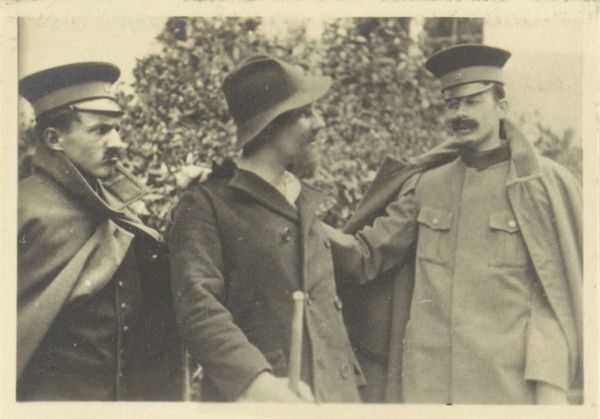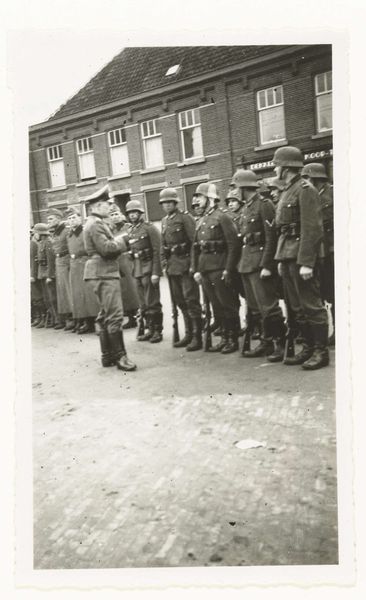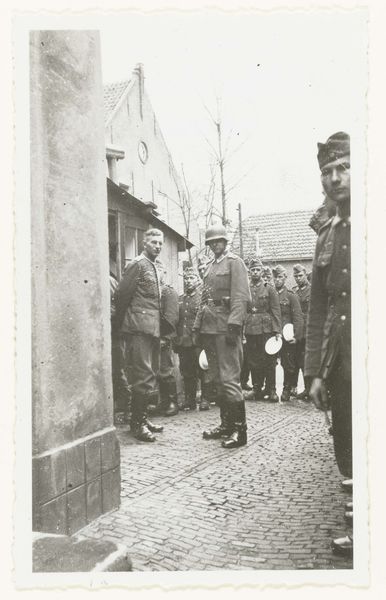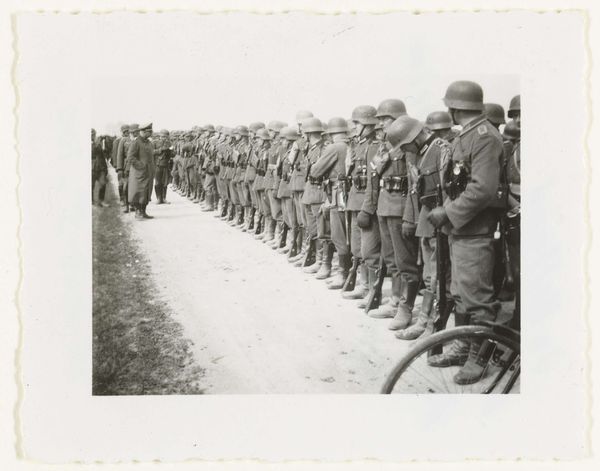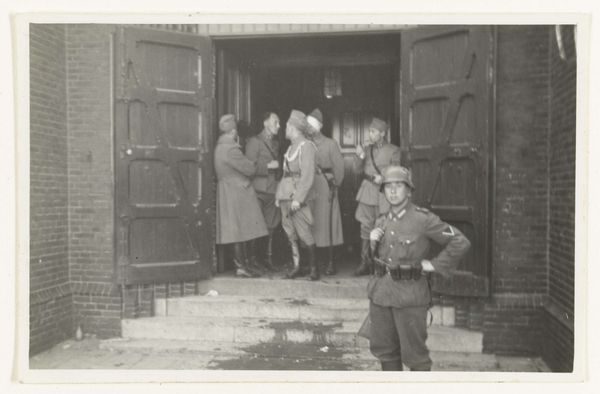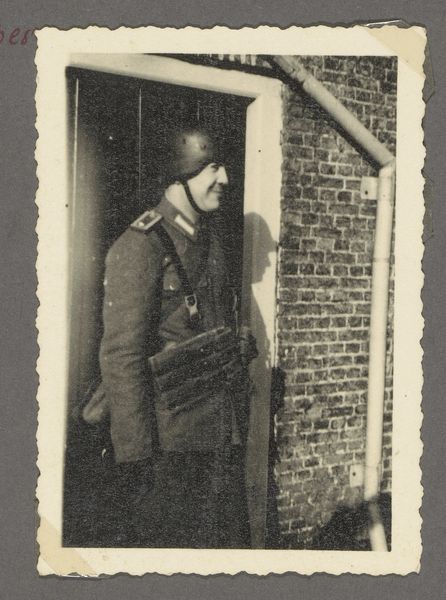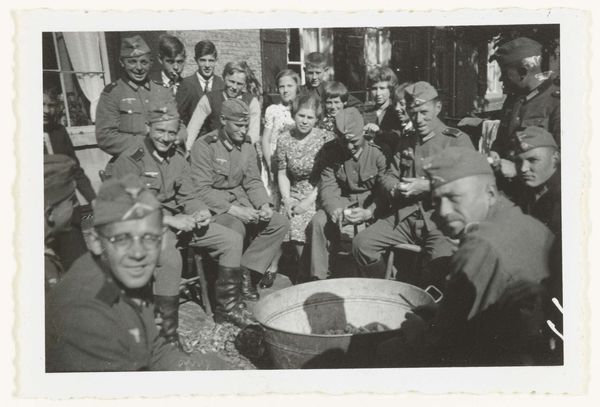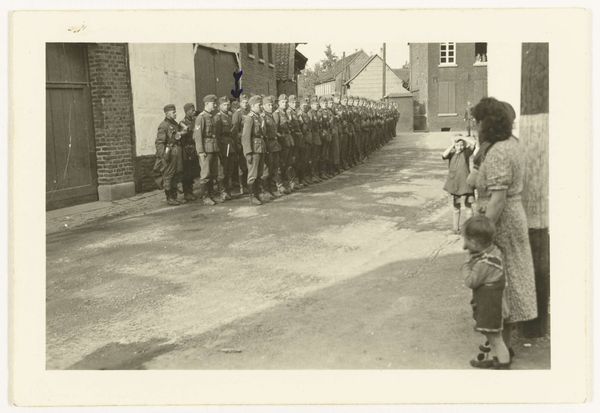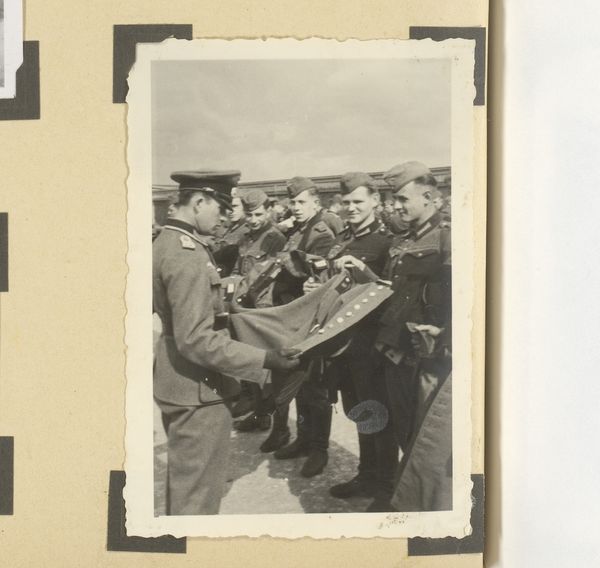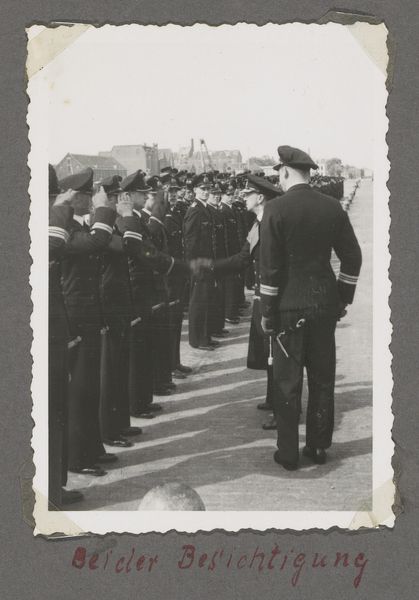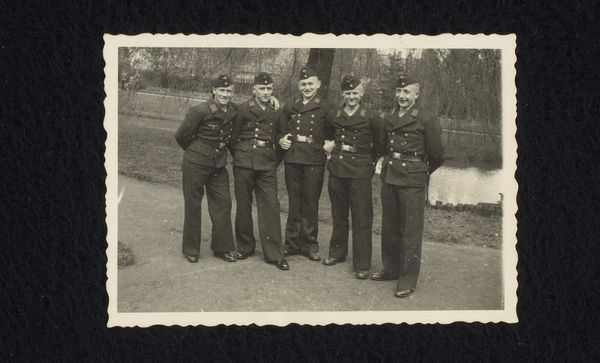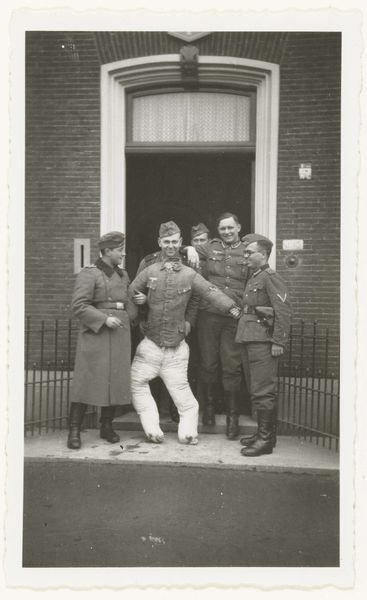
Dimensions: height 6 cm, width 6 cm
Copyright: Rijks Museum: Open Domain
Editor: Here we have "Vier Wehrmacht soldaten met broden," which translates to "Four Wehrmacht Soldiers with Bread," a gelatin-silver print photograph from 1941 held at the Rijksmuseum. It's striking how mundane it feels, considering the historical context. What can you tell me about its cultural significance? Curator: This seemingly innocuous image is precisely where its power lies. It normalizes the occupation. We see Wehrmacht soldiers, not as aggressors, but as men casually receiving bread. Consider the context of 1941. The Netherlands was under Nazi occupation. How do you think this image might have functioned as propaganda, shaping public perception at the time, especially considering the location it ended up in? Editor: I suppose it softens the image of the occupying forces. Maybe it suggests normalcy or even benevolence? I’d assume this photograph was intended to portray the soldiers as ordinary men just doing their job. It’s almost… unsettling. Curator: Exactly. And it is vital to remember that this isn't an isolated incident; this fits into a larger strategy. Photographs, newsreels, and other forms of media were strategically employed to control the narrative. Where do you think photographs such as this ended up? Editor: Well, given its current home at the Rijksmuseum, it feels like an artifact from the past used to understand a political landscape, yet I think during the time this photograph was intended to exist elsewhere, outside of museum walls. Curator: Precisely. It likely appeared in newspapers, magazines, perhaps even as part of larger propaganda displays. Its presence in the Rijksmuseum today forces us to confront the complicated history of representation and how images participate in shaping collective memory. I think this photo raises important questions about the role of photography during wartime. Editor: It's incredible how much a single photograph can reveal about the manipulation of public perception. Thanks for your perspective. Curator: It's been a pleasure sharing it with you. Looking at art through a historical lens always provides nuanced revelations.
Comments
No comments
Be the first to comment and join the conversation on the ultimate creative platform.

